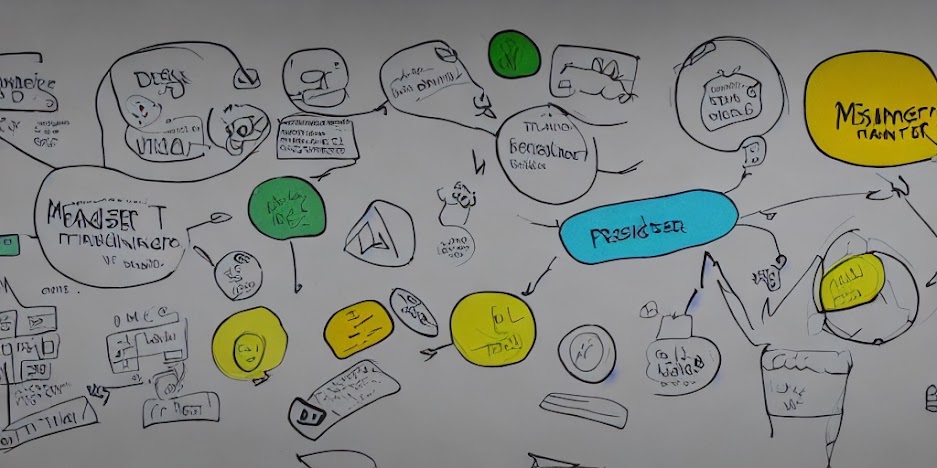Product Discovery is a critical process in product management that focuses on identifying, validating, and prioritizing the right problems to solve and the best solutions to develop. It is an iterative process that helps product teams ensure they are creating products that truly meet customer needs and deliver value to both users and the business. By prioritizing discovery, product managers can avoid the pitfalls of building features that don’t resonate with users, ultimately saving time, resources, and effort. This process involves collaboration across various teams, including product management, design, engineering, and other key stakeholders, to explore opportunities, test assumptions, and refine ideas before development begins.
The Importance of Product Discovery
In today’s fast-paced and highly competitive market, launching a product without thorough validation can be risky and costly. Product Discovery mitigates this risk by ensuring that teams are not just building things right but building the right things. The discovery process allows teams to focus on understanding the root causes of customer problems and to explore innovative solutions that address those issues effectively. By investing time in discovery, companies can avoid the common pitfall of delivering products that miss the mark with users and ensure that resources are allocated efficiently, focusing on solutions that are both feasible and valuable. This proactive approach helps companies stay ahead of the competition by delivering products that delight customers and solve real problems.
The Phases of Product Discovery
Product Discovery typically consists of several key phases, each contributing to a deeper understanding of customer needs and the development of effective solutions:
Understanding the Problem Space
- The first phase of Product Discovery is about gaining a deep understanding of the problem that the product aims to solve. This involves conducting thorough market research, customer interviews, and competitor analysis to uncover the pain points and unmet needs of the target audience. By understanding the problem space, product managers can identify the most pressing issues that need to be addressed and ensure that their solutions are aligned with customer needs.
- Example: When Airbnb started, the founders spent significant time talking to potential users—both travelers and hosts—to understand their frustrations with traditional hotel booking and short-term rentals. This deep understanding of the problem space led them to create a platform that addressed these specific pain points, ultimately revolutionizing the travel industry.
Ideation and Hypothesis Formation
- Once the problem is well understood, the next step is to generate ideas for potential solutions. This phase is about creativity and brainstorming, but it also involves forming hypotheses about which solutions will be most effective. Product managers and their teams collaborate to brainstorm a wide range of ideas, then narrow them down to the most promising ones based on feasibility, potential impact, and alignment with customer needs.
- Example: Spotify, in its early days, hypothesized that users wanted a music streaming service that offered instant access to a massive library without needing to download files. This hypothesis was born from understanding the limitations of existing music services and the growing demand for on-demand content. The team’s ability to identify this unmet need and test their hypothesis led to the development of a service that has become a global leader in music streaming.
Prototyping and Experimentation
- In this phase, the team builds simple prototypes to test their hypotheses. Prototyping allows them to experiment with different solutions quickly and inexpensively, gathering user feedback and iterating on the design. This phase is crucial for validating ideas before committing to full-scale development, ensuring that the solutions being developed are truly addressing user needs.
- Example: Google’s initial version of Gmail was developed as an internal prototype, focusing on solving the problem of email overload. Early users within the company provided feedback that led to features like conversation threading and powerful search, which became key differentiators in the final product. The prototyping phase allowed Google to test and refine their ideas before launching the service to the public, ensuring a successful product launch.
Validation and Learning
- The final phase of Product Discovery involves validating the prototypes with real users to learn what works and what doesn’t. This phase is essential for refining the product before moving into full-scale development. Validation can involve user testing, A/B testing, or launching a minimum viable product (MVP) to gather data and insights from actual users.
- Example: Dropbox started with a simple explainer video before building the actual product. The video outlined the concept and gathered interest, validating the demand for such a service. This early validation allowed Dropbox to refine its offering before fully developing the platform, ultimately leading to its success as a file storage and sharing service.
Tools and Techniques for Effective Product Discovery
To conduct effective Product Discovery, product managers rely on various tools and techniques that help them gather insights, test assumptions, and validate ideas. Here are some of the most important ones:
Customer Interviews
- Customer interviews are one of the most direct and effective ways to gather insights about user needs, pain points, and behaviors. By speaking directly with users, product managers can gain a deeper understanding of the challenges they face and the context in which they use the product. These interviews help to uncover qualitative data that might not be apparent through surveys or analytics, such as emotional responses or unmet needs. The key to successful customer interviews is asking open-ended questions that encourage users to share their thoughts and experiences in detail.
- Example: Slack’s early team conducted extensive customer interviews to understand how teams communicate and collaborate in a work environment. These interviews revealed that many teams were frustrated with email as a primary communication tool and were looking for a more efficient way to collaborate. This insight led to the development of Slack’s core features, such as channels and direct messaging, which have made it one of the most popular communication tools in the workplace.
Personas
- Personas are detailed, fictional profiles of target users that represent different segments of a product’s audience. They are created based on real user data and insights gathered through research and are used to guide product decisions by providing a clear picture of who the users are, what their needs are, and how they interact with the product. Personas help product teams stay focused on the needs of the users throughout the product development process, ensuring that the product is designed with the end-user in mind.
- Example: For the development of the Ford Fiesta, the Ford team created detailed personas representing different types of drivers, such as young professionals, families, and eco-conscious consumers. These personas helped the team understand the specific needs and preferences of each segment, leading to the development of a car that appealed to a wide range of customers. By keeping these personas in mind throughout the design and development process, Ford was able to create a product that resonated with its target audience.
Journey Mapping
- Journey mapping is a technique used to visualize the entire experience a user has with a product or service, from initial awareness to post-purchase support. It helps product teams identify key touchpoints, pain points, and opportunities for improvement throughout the user’s journey. By mapping out the customer journey, product managers can better understand the context in which users interact with the product and identify areas where the product can be improved to enhance the overall experience.
- Example: A leading e-commerce company used journey mapping to understand the customer experience from the moment a user lands on their website to the point of making a purchase and receiving the product. The journey map revealed that many customers abandoned their shopping carts due to a complicated checkout process. Based on this insight, the company simplified the checkout process, resulting in a significant increase in conversion rates and customer satisfaction.
Design Thinking
- Design thinking is a user-centered approach to innovation that emphasizes empathy, ideation, and experimentation. It involves understanding the user’s needs and problems, generating a wide range of ideas, and then prototyping and testing those ideas to find the best solution. Design thinking encourages teams to think creatively and consider multiple perspectives when solving problems, leading to more innovative and effective solutions. It is a highly iterative process, with teams continuously refining their ideas based on feedback and insights from users.
- Example: IDEO, a global design and innovation firm, used design thinking to develop the first mouse for Apple. The team conducted extensive user research to understand how people interacted with computers and what they needed from a pointing device. Through multiple iterations and prototypes, they developed a mouse that was both functional and intuitive to use, setting a new standard for computer peripherals.
Lean Startup
- The Lean Startup methodology focuses on building, measuring, and learning from Minimum Viable Products (MVPs) to validate business ideas quickly and efficiently. It emphasizes the importance of testing assumptions and iterating based on real user feedback rather than making decisions based on intuition or untested theories. By following the Lean Startup approach, product managers can reduce the risk of failure by validating ideas before investing significant resources in development.
- Example: Zappos, an online shoe retailer, started with a lean approach by testing whether people would buy shoes online. The founder, Nick Swinmurn, took pictures of shoes from local stores and listed them online. When customers placed orders, he would go buy the shoes and ship them to the customers. This approach allowed him to validate the business model with minimal investment, eventually leading to the creation of a billion-dollar company.
The Role of the Product Manager in Discovery
The product manager plays a crucial role in leading the Product Discovery process. They are responsible for ensuring that the team focuses on solving the right problems and developing solutions that align with both customer needs and business goals. This requires a combination of strategic thinking, empathy, and strong communication skills.
Product managers must be able to synthesize information from various sources, including customer feedback, market research, and business objectives, to inform decision-making. They must also be willing to challenge assumptions and push the team to explore new ideas and perspectives. Additionally, product managers need to foster a culture of continuous discovery within their team, encouraging ongoing exploration and learning even after the product has launched. This mindset helps ensure that the product evolves in line with changing user needs and market conditions.
In their role, product managers often act as the bridge between different teams, facilitating collaboration and ensuring that everyone is aligned on the product vision. They must balance the needs of the users with the goals of the business, making tough decisions about which features to prioritize and which to deprioritize. Successful product managers are those who can navigate this complexity and lead their teams to deliver products that truly resonate with users and drive business success.
Summary
Product Discovery is the cornerstone of effective product management. It’s the process that transforms ideas into validated solutions, ensuring that teams build products that truly resonate with users. By investing in discovery, companies can reduce risk, save resources, and increase the likelihood of product success. Whether you’re a startup looking to launch a new product or an established company aiming to innovate, mastering the art of Product Discovery is essential for staying competitive in today’s dynamic market.























